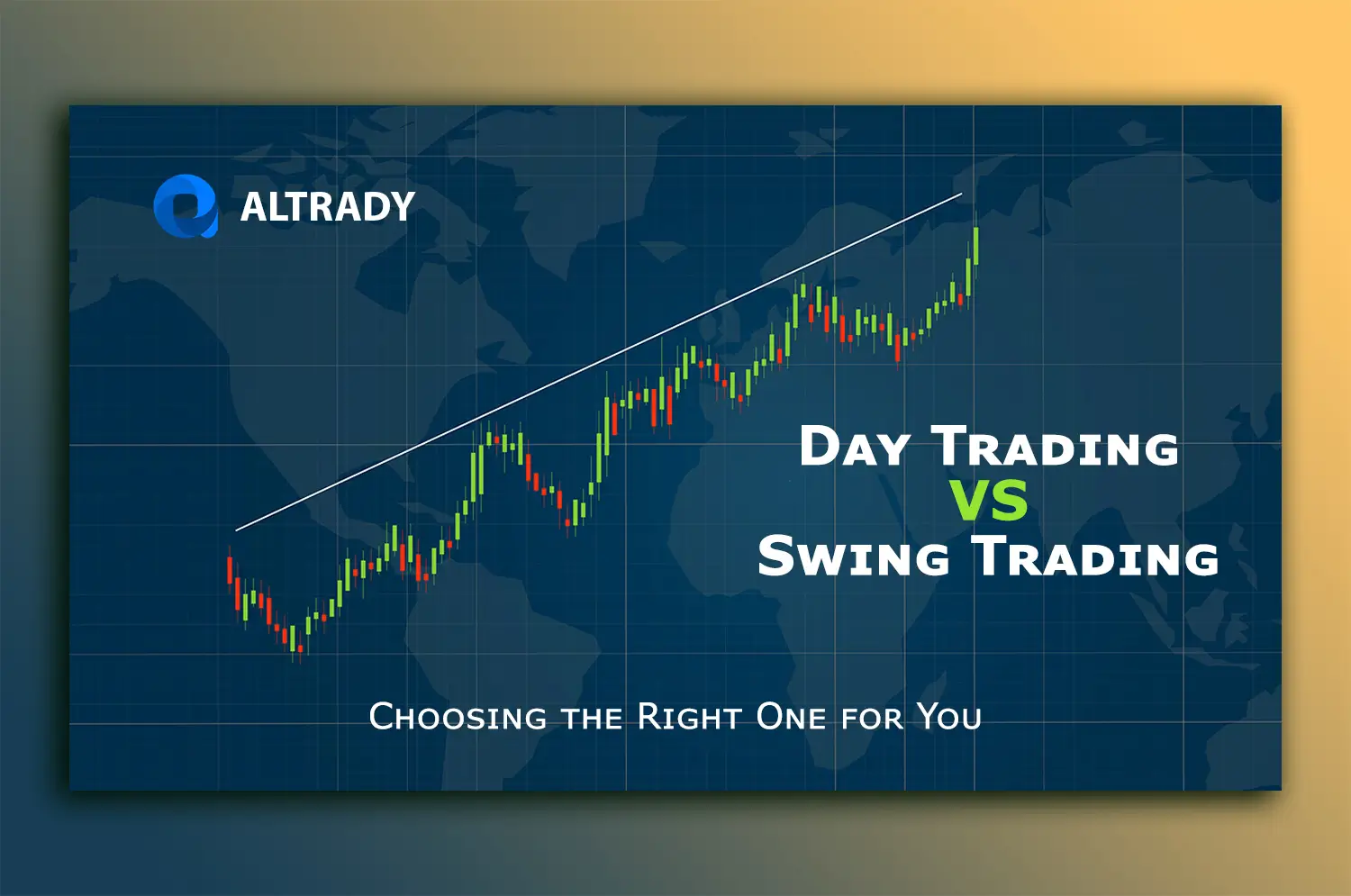Black Friday is loading…
Get 40% off with Altrady’s yearly plan and take the lead.
.svg)
.svg)
.svg)
.svg)
.svg)
.svg)
.svg)
.svg)
.svg)
.svg)
.svg)
.svg)

Swing trading and day trading are vastly used methods in financial markets as well as in crypto markets. Both are different ways of approaching markets, with the same purpose: to generate gains in the short term.
To choose the best method for yourself, this article will dive into the most important aspects of each of those methods. From understanding how each complements other incomes or professions, to setting personal financial goals and assessing the risk tolerance of every aspiring trader.

Swing trading is a long-term trading activity in financial markets that aims to capitalize on days or weekly time frames of price movements.
Swing trading in cryptocurrency is the act of holding a position for a sustained period. Days or weekly positions help traders to overcome volatility.
The crypto market carries volatility, so when swing trading, you can overcome these situations by holding positions for some time and managing risk-to-reward ratios better.
Day trading is opening and closing trading positions within a day. Day trading is mainly a speculative activity, it looks for short-term price movements, between 30min and 5min time frames.
Day trading requires more ruled execution, hence specific trading plans.
Day trading is very attractive to speculators. Cryptocurrencies offer high volatility conditions that will lead to high returns of capital in the short term.
Day traders are a type of "take and get away" players, whose operations do not last much more than a day.
Strategies of a day trader include technical indicators, market sentiment analysis, and adjusted risk management to be successful.
Day trading could be an intense environment for most participants of this market; cryptocurrencies are mostly speculative vehicles. The prices of cryptocurrencies move fast and a trader may capitalize fast as well as lose fast.

Swing trading is a daily and weekly approach to the crypto market that offers flexibility for most traders who can not spend all day in front of a screen.
Swing trading can, however, can have some hindrances:
Swing traders also have to take into account the needs of these strategies. Holding overnight positions will face some costs. Unlike day traders who close positions before the market closes, swing traders hold positions overnight and over weekends. This exposes them to unexpected news events, earnings reports, or economic data releases that can cause significant market swings against their position.
Pointing to another aspect compared to day trading, swing trading often requires a larger initial investment. This is because positions are held for longer, tying up capital that could be used for other trades.
Day trading offers speculative opportunities for traders who aim to profit from fast movements.
Small movements in prices give day traders several opportunities within a day. A day trader could enjoy the benefit of capitalizing quickly but at the cost of riskier plans.
Day trading is a fast-paced environment that could lead to confusion and quick decision-making.
The high stress, constant monitoring, and potential for high transaction costs all combine to make day trading a challenging endeavor.
Day trading requires glued eyes to the market throughout the trading day. This constant monitoring can be mentally draining, leading to fatigue and clouded judgment.
The pressure to make quick decisions based on fast market movements can further heighten stress levels.
This stressful environment can easily cloud your judgment and lead to impulsive decisions based on fear or greed, potentially resulting in losses.

Swing trading and day trading success hinges heavily on your personality and lifestyle.
Here's a breakdown of the key factors to consider:
Even when no capital is required (technically) to start day trading, a certain amount is indeed needed to succeed. Low capital traders tend to lose more, and faster, due to the inability to maintain positions, high leverage, and adjusted stop loss.
The capital required will, in the ultimate instance, be the result of the trader's following aspects:

Swing traders will use certain resources like technical analysis chart drawings, and research over the assets chosen.
A swing trader will suit well with technical indicators like Moving Averages and Relative Strength Index (RSI).
Watchlists and price alerts are of great help to track the movements of an asset.
Some swing traders follow and participate in telegram communities, Reddit, and specialized forums to obtain information.
Day traders, for their part, will be interested in reading volume and keeping track of real-time price action.
Most day traders use software like Metatrader and NinjaTrader, they offer specialized services on real-time data ticks and volume. Altrady also offers great resources like QuickScanning to pick trades at the right time following certain rules.

Swing trading and day trading are both methods that offer strategies adapted to different lifestyles and risk aversion.
Day trading is mostly a daily activity that requires keeping track of real-time movements of the price.
Swing trading is, for its part, a weekly forecast trading style. This method lets traders experience less stress compared to day trading, capital management in this case is more flexible but requires a long-term plan.
Traders doing swing or day trading, or both at the same time, will improve their performance through constant reading, and following personal financial goals.
Setting a trading plan will be a great help to achieve those goals, to develop discipline, and grow trading accounts consistently.